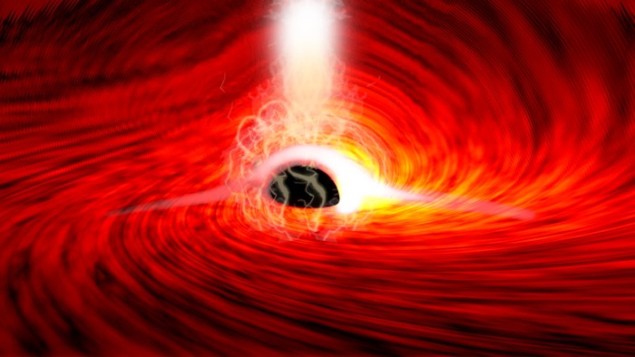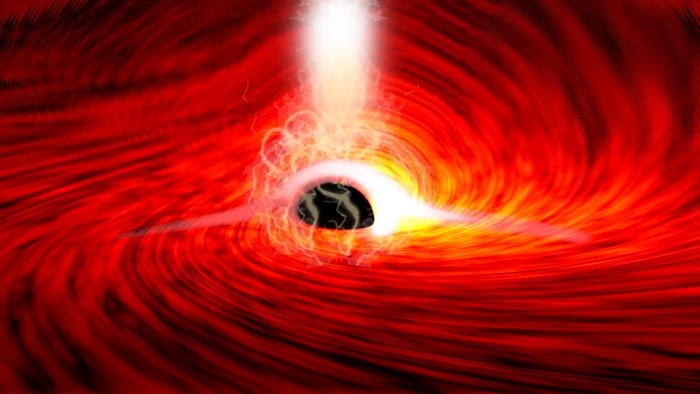
X-ray flares originating from behind a black hole have been observed for the first time – by an international team led by Dan Wilkins at Stanford University in the US. The wavelength-shifted X-ray flashes are believed to have originated as photons that collided with the black hole’s inner accretion disk, before being redirected towards Earth by the black hole’s colossal gravity. By observing the effect in more detail, astronomers could gain important insights into the immediate surroundings of black holes.
Just before material passes across the inescapable event horizon of a black hole, theories predict that it is superheated to millions of degrees, forming a rotating corona of plasma surrounding the black hole. Meanwhile, the black hole’s magnetic field is continually twisting, snapping and recombining as the plasma rotates. This magnetic activity imparts colossal amounts of energy on plasma electrons, which produces intense, characteristic flashes of X-rays.
While these events have been widely observed, recent calculations by Wilkins suggest that we should also see smaller, delayed X-ray flashes. These X-rays are emitted behind the black hole from our perspective – but then reverberate off the inner surface of its orbiting accretion disk. Due to Einstein’s general theory of relativity, these echoes should be bent around the black hole, and magnified by its intense gravitational field.
Dimmer flashes
Furthermore, the orbital motion of the accretion disk means that X-ray photon wavelengths will be shifted to varying degrees, depending on where within the disk they reverberate from. As a result, these dimmer flashes can offer glimpses of an environment completely obscured from our view.
In their study, Wilkins’ team made X-ray observations of the supermassive black hole at the centre of the I Zwicky 1 – a galaxy about 59 million light–years away — using NASA’s NuSTAR telescope, and the ESA’s XMM-Newton instrument. Just as Wilkins predicted, both telescopes clearly detected energy-shifted X-ray flashes which followed brighter larger flares – providing key evidence that X-rays from behind the black hole had echoed off its accretion disk.
Through future observations of the effect, Wilkins and colleagues hope that astronomers could learn much more about the physical processes taking place in black hole coronas – which have so far proven notoriously difficult to study. The ideal opportunity for these measurements will come with the ESA’s Athena X-ray observatory, planned for launch in 2031. Featuring a far larger mirror than existing X-ray telescopes, the instrument will for the first time enable in-depth observations of X-rays originating throughout the entire coronas of black holes.
The research is described in Nature.
